- 1. Key Takeaways
- 2. Visiting Isle Royale National Park
- 2.1. Where is Isle Royale?
- 2.2. Best Time to Visit Isle Royale National Park
- 2.3. Isle Royale National Park - Where to Stay
- 3. Isle Royale Itinerary
- 3.1. Day One
- 3.2. Day Two
- 4. Best Things to See and Do in Isle Royale National Park
- 4.1. Isle Royale National Park Things to Do
- 4.2. Must-See Places to Visit in Isle Royale National Park
- 5. Final Thoughts
- 6. FAQs
- 6.1. How big is Isle Royale?
- 6.2. Why is Isle Royale National Park famous?
- 6.3. How much does it cost to go to Isle Royale?
- 6.4. Are cars allowed on Isle Royale?
- 6.5. Is there drinking water on Isle Royale?
- 6.6. What do you wear when visiting Isle Royale National Park?
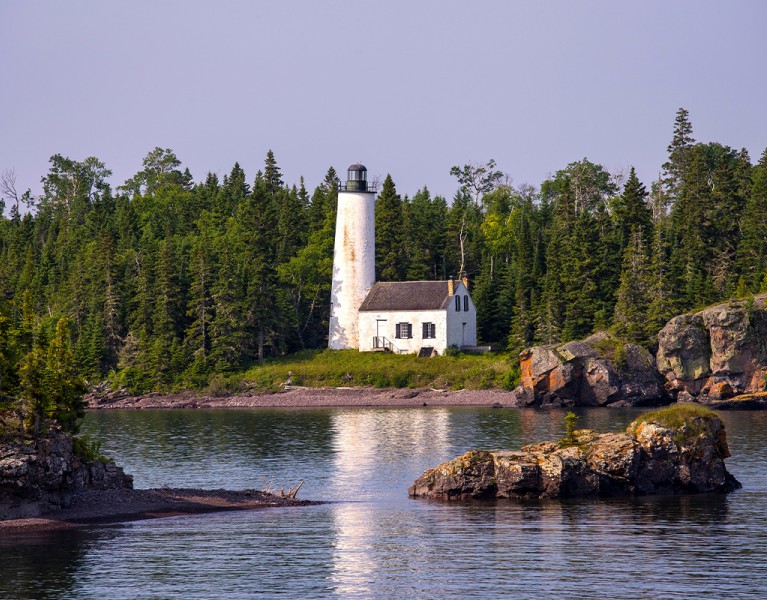
Journey to Isle Royale National Park - Ultimate Travel Tips
Table of Contents [Show]
Ah, Isle Royale National Park - a remote reminder of what America really is. America has a diverse landscape between its coasts. Think of vast deserts, lush green forests, snowy mountain ranges, and beautiful sandy beaches. But America is also the thousands of lakes that make it a water wonderland.
In its northeastern region, America is graced with the Great Lakes. The largest of the Great Lakes, Lake Superior in Michigan, is speckled with over 450 islands, one of which harbors one of the remotest national parks in the US- Isle Royale (pronounced "ile royal").
Reachable only by boat or seaplane, Isle Royale is difficult to get to, meaning it hosts few visitors. For comparison, the park received a meager 29,059 visitors in 2023, which is nothing compared to Yellowstone's 4.1 million visitors the same year.
But though this is the least visited national park in the US, those who dare make the journey stay longer and typically find themselves coming back again and again. And there's a reason for that.
Whether you're an avid hiker looking for the best places to hike in Michigan or just trying to escape civilization, we've got you covered with this Isle Royale, Michigan travel guide. Below, you'll find how to get to Isle Royale, where to stay, and the top things to do in Isle Royale National Park.
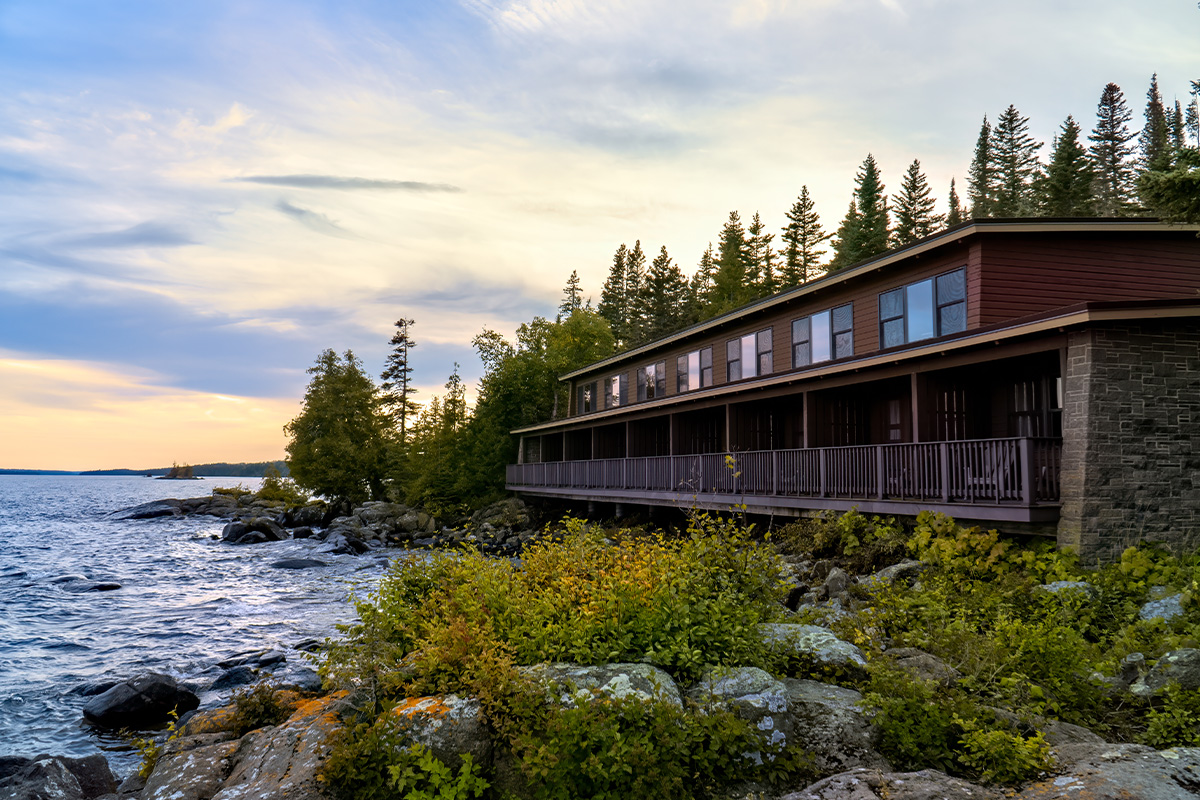
Key Takeaways
- Isle Royale National Park is in the northwest corner of Lake Superior in Michigan.
- Seaplanes and ferries are the only transportation options for getting to Isle Royale National Park. Ferries to Isle Royale Park depart from Houghton, MI; Copper Harbor, MI; Grand Portage, MN; and Grand Marais, MN. Seaplanes to Isle Royale originate from Hancock, MI.
- Automobiles are not allowed in the park as it is 98% federally designated wilderness area. This leaves hiking on one's feet as the only means of land travel.
- Rock Harbor Lodge is the only full-service facility within the park. Other accommodation options are Windigo Camper Cabins and camping in the 36 first-come, first-served campgrounds.
- Isle Royale National Park operates between mid-April through October 31st. It's closed throughout the rest of the year due to bad weather.
Visiting Isle Royale National Park
Where is Isle Royale?
Isle Royale National Park is in Lake Superior, Michigan. The national park is located in the northwestern corner of Lake Superior, some 15 miles from the Canadian border and 56 miles from the Upper Peninsula shore.
The park resides on a 50-mile-long and 9-mile-wide island. This is the largest island of the 450+ islands found in Lake Superior. It's richly forested with aspen, conifer, birch, and cedar and is home to a wide variety of wild animals, including wolves, moose, beavers, and red foxes.
Getting to Isle Royale
Figuring out how to get to Isle Royale National Park and actually getting there is an adventure in itself. There are three Isle Royale transportation options: ferry, seaplane, and boat.
Boats of any size are permitted on Lake Superior. But in all honesty, we don't recommend bringing a smaller watercraft as the waves here can be extremely hazardous, even in moderate weather.
There are four major ferry departure points for Isle Royale, Lake Superior: Houghton, MI; Copper Harbor, MI; Grand Portage, MN; and Grand Marais, MN.
Getting to Isle Royale from Houghton
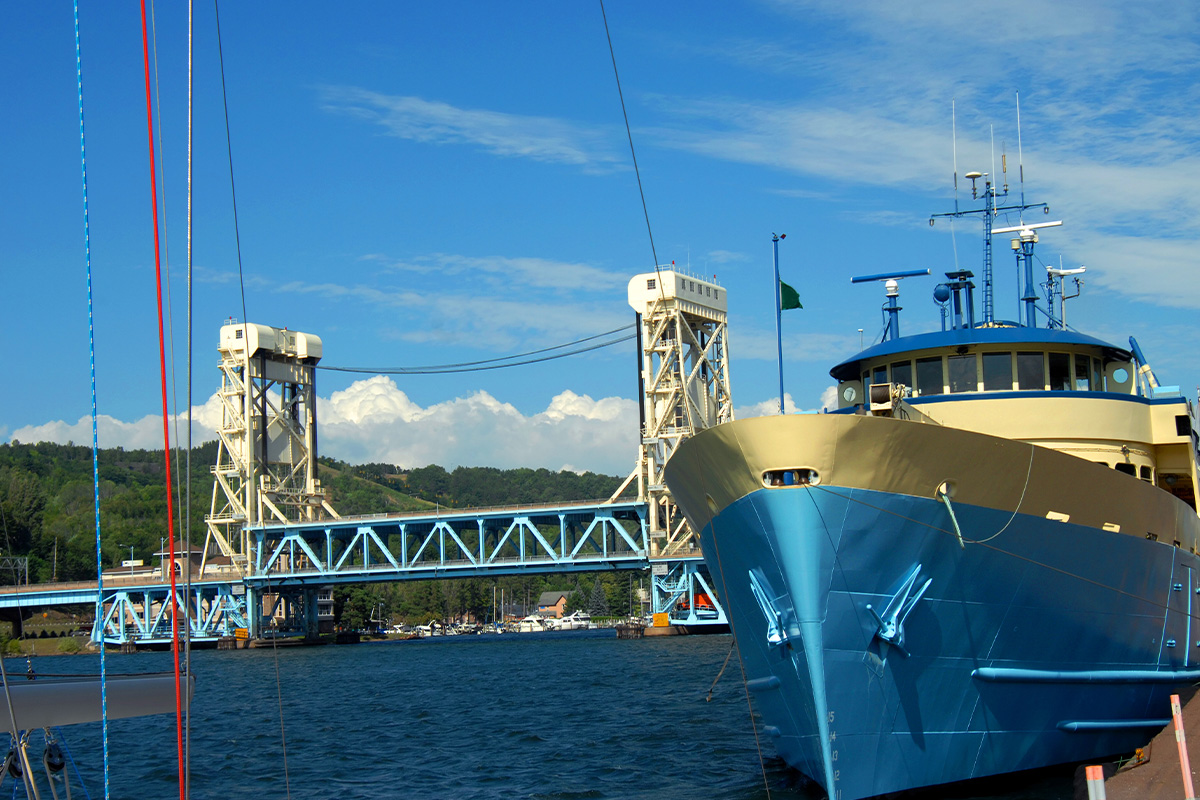
By Ferry
The Ranger III ferry is the most preferred option for getting to Isle Royale from Houghton, Michigan, because it's larger than other ferries to Isle Royale. This NPS-operated ferry operates from the end of May to mid-September.
The Ranger III ferry travels from Houghton to Rock Harbor (Isle Royale Island) on Tuesdays and Fridays from 9 AM Eastern time. It voyages back from Rock Harbor to Houghton on Wednesdays and Saturdays. However, once a month, usually on a Tuesday, the Ranger III travels to Windigo instead of Rock Harbor and returns the next day, Wednesday.
Isle Royale National Park ferry journey from Houghton to Rock Harbor takes six hours. But one hour is inland traveling from the dock to the lake, which has really lovely views.
Ranger III fares for a one-way trip are $80 for adults and $40 for children 1-15 years. Kids under one year travel free. Kayaks, canoes, and boats 20'00" and below are also carried at an additional cost.
Note that the Ranger III ferry does not carry cars to Isle Royale National Park. All motor vehicles are parked on the mainland. Free parking is provided.
By Seaplane
The fastest way to get from Houghton to Isle Royale National is by seaplane. Of course, this option will cost you more than taking the ferry. But the aerial views as you fly into Tobin Harbor are worth every penny.
The departure point for Isle Royale seaplanes in Michigan is in Hancock along the Keweenaw Waterway. Isle Royale Seaplanes also has another departure point in Grand Marais, Cook County, Minnesota.
The seaplanes operate from mid-May through mid-September and provide services to both Rock Harbor and Windigo. Flights to Isle Royale National Park take 45-60 minutes and cost $300-$350 per person for a round trip.
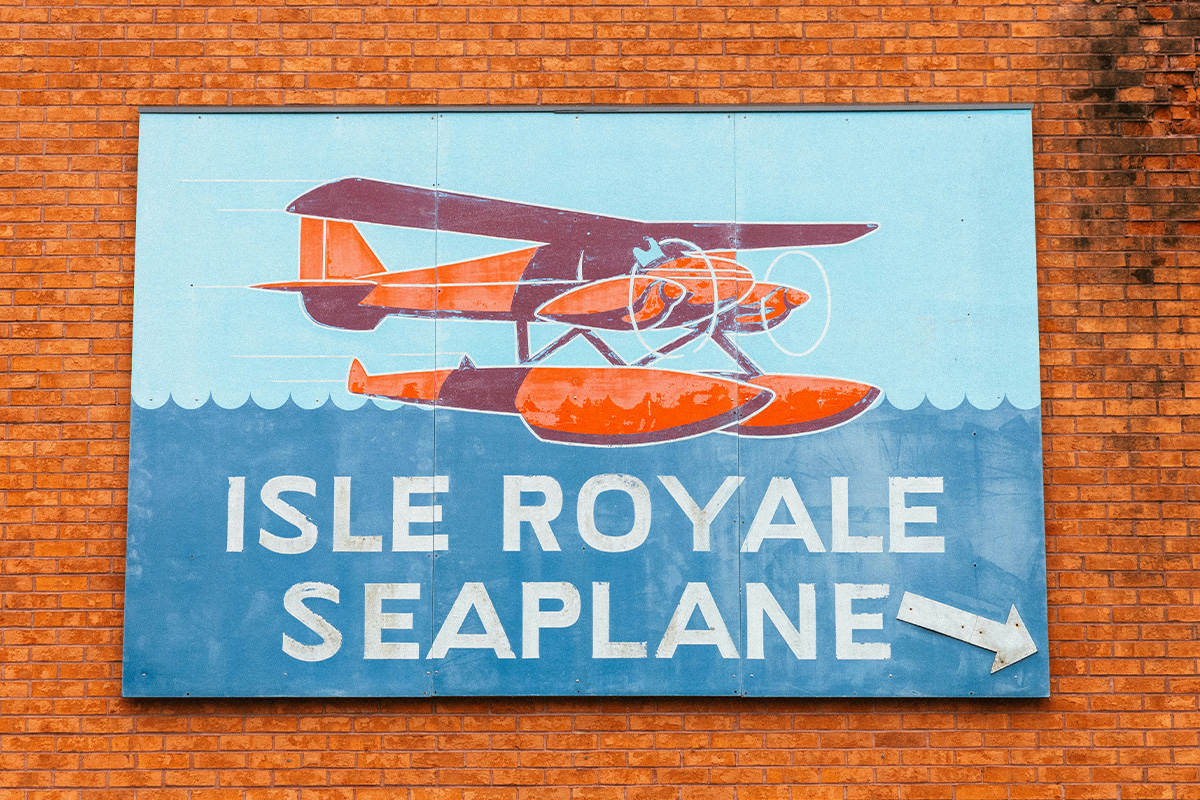
Getting from Copper Harbor to Isle Royale National Park
If you’re visiting Isle Royale from Copper Harbor, take the Isle Royale Queen IV. This passenger ferry operates between Copper Harbor and Rock Harbor only. Although its schedule varies, it typically runs from early May through September.
The Isle Royale Queen IV ship departs Copper Harbor for Rock Harbor at 8 AM EDT. The journey takes approximately three hours. The ferry makes the return trip to Copper Harbor the same day, typically departing Rock Harbor at 2:45 PM EDT.
Best Time to Visit Isle Royale National Park
Isle Royale National Park's operating dates are from April 16th to October 31st. The park remains closed to all visitors from November 1st to April 15th due to bad weather.
The best time to visit Isle Royale is June through August. With more sunny days and almost no precipitation, the weather during this timeframe is perfect for most of the Isle Royale National Park things to do, particularly hiking, viewing wildlife, and camping.
Plus, this is when most of the wildlife comes out of hibernation, and the plants are in full bloom. This makes these summer months the perfect time to experience the unique ecosystem that Isle Royale has to offer.
If you’re visiting Isle Royale National Park with family, summer packs more fun activities for kids, from completing activities for a ranger badge to touring old lighthouses and paddling the calm waters of Washington Harbor and Tobin Harbor.
Summer is the peak season in Isle Royale National Park. “Overcrowding” in Isle Royale National Park is relative, though. It means doubling up in a campsite and passing five people on a six-mile hike instead of one.
That said, September is the best month to visit Isle Royale National Park with fewer crowds. The weather is still great for outdoor explorations, between 45 and 63 degrees F, but summer break is over, and schools have reopened.
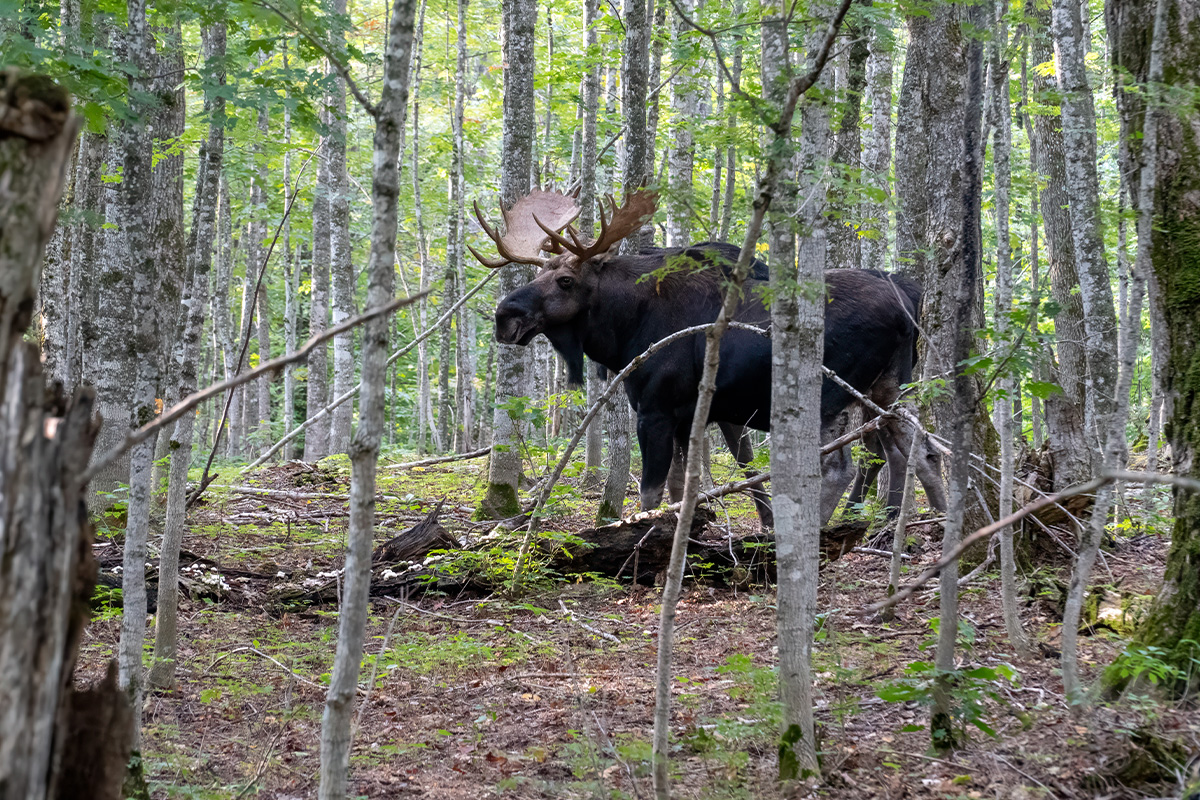
Isle Royale National Park - Where to Stay
There are three accommodation options inside Isle Royale National Park: the Rock Harbor Lodge, Windigo camper cabins, and tent camping.
Rock Harbor Lodge
The Rock Harbor Lodge is located on the northeastern tip of the island. Nestled along the shores of Lake Superior, this is the only overnight facility in the park that offers full services. The complex comprises 60 lodge rooms/suites, 20 cottages, and a combination restaurant, grill, and gift shop.
Each of the 60 lodge rooms has panoramic water views, a private bathroom, and a coffee maker. The cottages are located in Tobin Harbor, about 0.9 miles from the registration building. Although getting to the cottages requires a longer walk, they offer more privacy and are a better option for families and larger groups. Amenities in the cottages include a private bathroom, a kitchenette with a stovetop, a mini fridge, and a microwave.
Windigo Camper Cabins
Windigo Camper Cabins are located at the southwest end of Isle Royale Island overlooking Washington Harbor.
These are only two cabins set up as an experiment. They are designed to offer the unique and immersive experience of “a cabin in the woods.” Each cabin has two bedrooms, each with two twin bunk beds, and a living room with a full-size futon that can sleep two, a table, and two chairs.
Outside is a private deck with two chairs, a water spigot, a propane grill, and an outhouse. The cabins have electricity but lack indoor plumbing.
There is a camp store in the Windigo area that sells eggs, yogurt, milk, etc. The store also sells ice, so bring veggies and fruits in a cooler.
Windigo Camper Cabins can accommodate up to six visitors each. They cost $50 a night and accept reservations 366 days in advance.
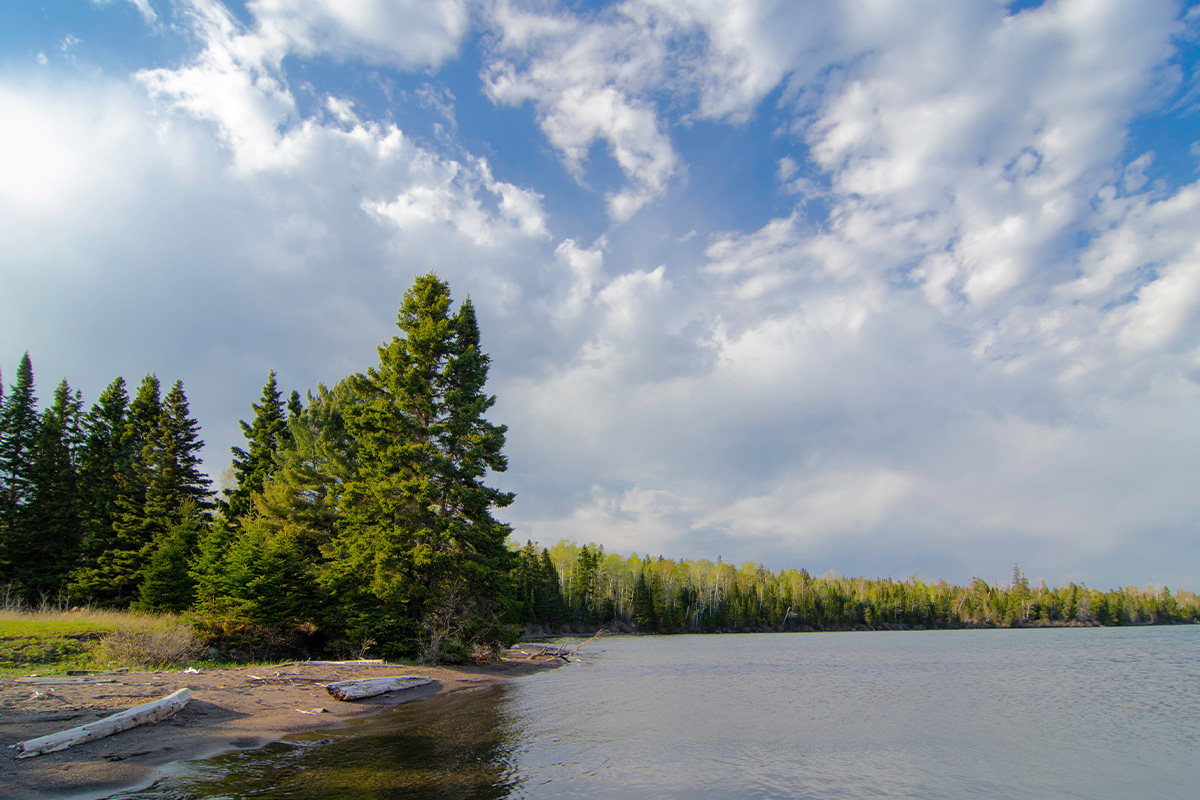
Isle Royale Campgrounds
Isle Royale National Park has 36 campgrounds and about 170 campsites spread across the island. Due to its wilderness status, this park offers tent-only camping only.
Reservations and Permits
All campgrounds at Isle Royale National Park are first-come, first-served for groups of six or fewer. Parties of seven backpackers or more are required to make group reservations.
You need a permit to camp in Isle Royale. Permits are free for boaters and groups of six or less. Parties of seven or more must pay a $25 permit fee on top of park entry fees. Permits for camping in Isle Royale National Park are available at Rock Harbor Visitor Center, Windigo Visitor Center, and aboard the Ranger III ferry.
A word about night stay limits
Note that most Isle Royale campgrounds have 3-6 individual tent sites. When you arrive at Rock Harbor Visitor Center or Windigo and disclose your itinerary to the rangers, you may be asked to make some changes if your desired campground is full.
Also, keep in mind that a majority of the campgrounds near the visitor centers have a strict limit of 1-2 nights. If you plan to stay longer, you’ll be required to hike between campgrounds.
Most campgrounds are reachable only by hiking and can be 2-8 miles away from each other. However, several campgrounds along the shoreline have docks for power and sail boaters.
Campground amenities?
Except for Washington Creek Campground, which has firewood, potable water, laundry services, ice, and more nearby, all other campgrounds in Isle Royale offer primitive camping. Remember to include enough supplies in your camping checklist to make your stay comfortable.
Isle Royale Itinerary
How many days do I need at Isle Royale National Park?
It’s possible to enjoy Isle Royale National Park on a day hike. But this only limits you to one side of the park and the trails around the visitor centers. Plus, you’ll spend most of your time on the ferry rather than experiencing the park’s beauty.
To truly appreciate Isle Royale scenery and its charm, you need at least two days, a well-crafted backpacking checklist, and a sense of adventure. Most Isle Royale National Park visitors stay four days on average.
Here’s how to explore Isle Royale National Park on a two-day visit. For this itinerary, we assume that your departure point is Copper Harbor, MI, as the journey by ferry takes around three hours only.
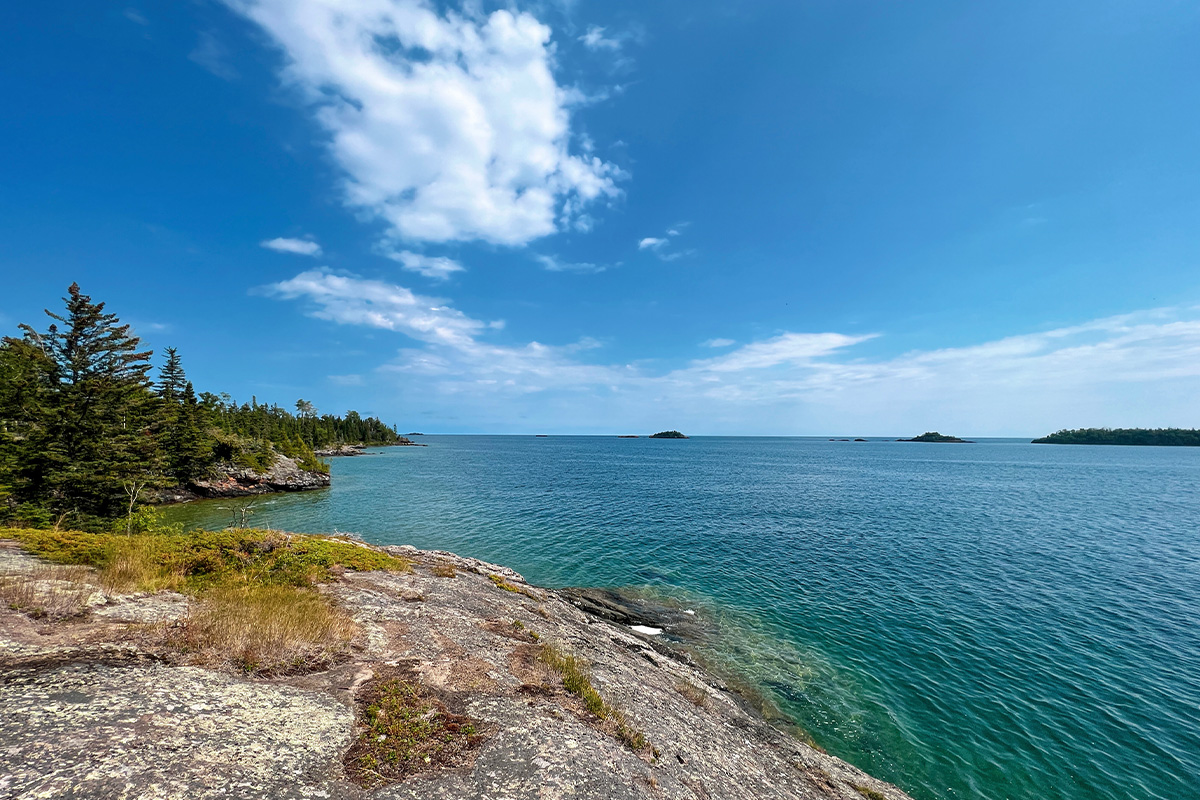
Day One
Arrive at Rock Harbor
The Isle Royale Queen IV ferry will arrive at Rock Harbor at around 11:30 AM. Upon arrival, there will be an introductory welcome speech for campers. If you’re planning to camp, ensure you’re among the first people inside the visitor center to get a camping permit. This will increase your chances of securing a camping spot in your desired campground. Rock Harbor Campground is the closest to the visitor center and most visitors’ favorite.
Rock Harbor Visitor Center and Lunch
After paying your park entrance fees and collecting your camping permit, take some time to interact with the rangers at the visitor center. On-site rangers know more about the park than website administrators and social media managers. They are your best source for timely tips and advice on making the most of your short visit. Also, remember to pick up physical maps of the park.
Once you have settled into your campsite or lodge room, it’s time for lunch. You can either make your own or get some food at the small restaurant or grill in the lodge area.
Hike to Suzy’s Cave (and Three Mile Campground, Optional)
In the afternoon, fill up your water bottles and grab some snacks for a great little hike to Suzy’s Cave. The hike to Suzy’s Cave is one of the best things to do around Rock Harbor.
Formed 4000 years ago by wave action, this inland sea arch is located 1.8 miles from Rock Harbor along the Rock Harbor trail. It’s also accessible via the Tobin Harbor trail, which is relatively smoother.
The 3.6-mile roundtrip hike to and from Rock Harbor is a pleasant one, mainly because a big part of the trail runs along the shoreline. While the hike is moderately challenging, the sound of the crashing waves and the excellent views of the lake make it bearable.
If you still have plenty of time, make your way to Three Mile Campground for a total roundtrip hike of six miles. Three Mile Campground is known for its stunning views of Greenstone Ridge. It’s one of the best places to relax, hang out, and picnic as you take in the views, even if you don’t plan to spend the night. Be back in time at Rock Harbor for dinner.
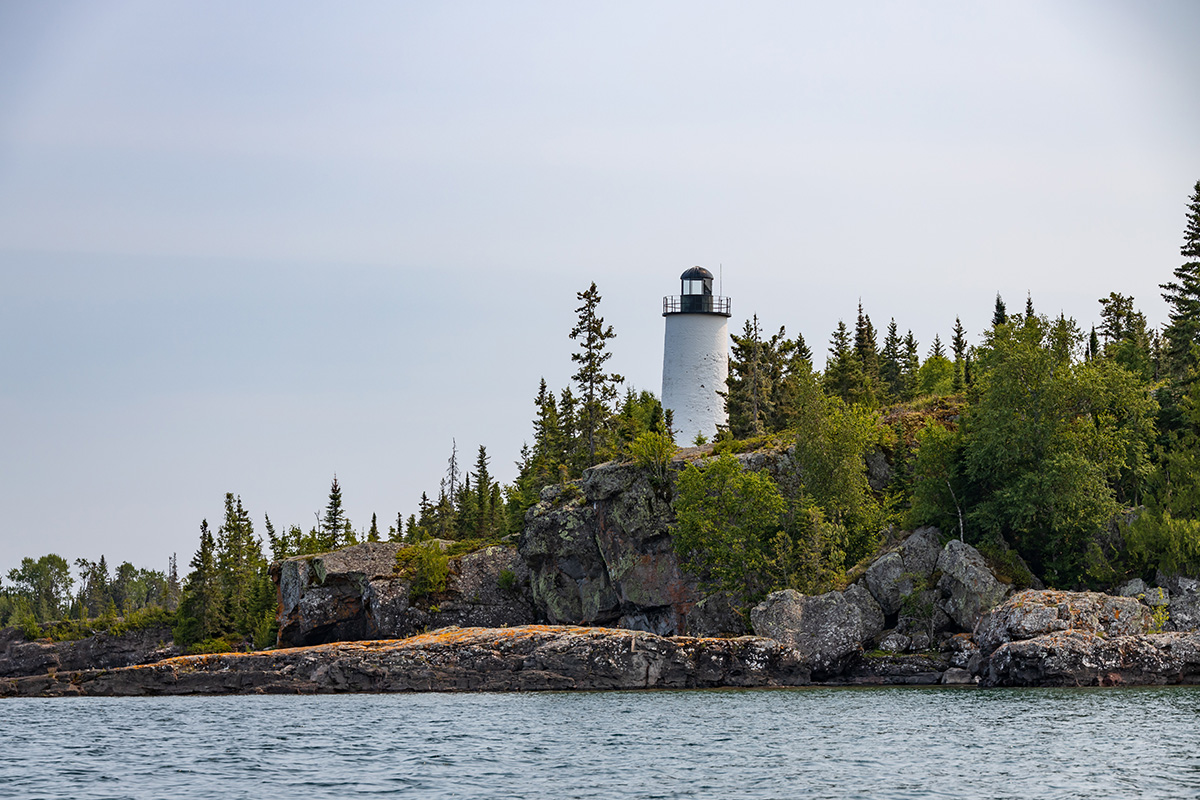
Day Two
In the Morning: Scoville Point/Stoll Monument
Start your second day with a hike to Scoville Point. This is one of the best hikes in Isle Royale National Park, thanks to its epic views of Lake Superior and its rocky shoreline.
Most first-time visitors consider it pretty easy as it’s mostly flat, although it occasionally gets a bit rocky in sections where the trail gets closer to the shore.
The hike to Scoville Point starts on the Stoll trail about a quarter mile east of Rock Harbor docks. The 4.9-mile loop trail takes 2-3 hours to complete, depending on how long you take to admire the views at Scoville Point.
In the Afternoon: Lookout Louise
If you still have some time for another short hike before your departure, the hike to Lookout Louise is a good option. Lookout Louise is among the most interesting lookout spots on the island, thanks to its commanding views of Lake Superior and further out to Canada.
The hike to Lookout Louise starts with a 20-minute water taxi ride from Rock Harbor to Hidden Lake dock. The water taxi ride costs $38/person (one way), but it’s cheaper if there are more people in the group (up to 6 people). There’s also an option to rent a canoe for as little as $25 for a half day and paddle across the quiet waters of Tobin Harbor.
From Hidden Lake dock, the hike to Lookout Louise is about a mile each way. There is some climbing as you get closer to the lookout point, but it’s nothing strenuous. Without forgetting, the area around Hidden Lake is a popular hangout spot for moose. Keep your eyes peeled and cameras ready. But remember to maintain a comfortable distance when you come across one. Oh, and mind the time so you don’t miss your ferry ride or flight back to the mainland.

Best Things to See and Do in Isle Royale National Park
Isle Royale National Park Things to Do
Backpacking
With over 165 miles of hiking trails and 36 first-come, first-served campgrounds, it makes sense that backpacking is the best way to experience Isle Royale National Park. There are endless hiking routes on Isle Royale Island. If you have the time for the longest trail in the park, that would be the Greenstone Ridge trail. This 41-mile point-to-point trail is challenging but lets you explore both ends of the park.
Paddling
There are numerous protected coves that are safe to paddle around Isle Royale island. Rent a canoe or kayak and paddle the calm water of Washington Creek or Tobin Harbor.
Scuba Diving
There are ten major shipwreck sites in Isle Royale. From massive steel freighters to wooden steamers, these vessels at the bottom of the lake are a major attraction for experienced scuba divers.
Must-See Places to Visit in Isle Royale National Park
Scoville Point
The northeast tip of the island is a great place to relax and enjoy the scenery. The hike to Scoville Point from Rock Harbor is also one of the best in the national park because of its constant lake views.
Lookout Louise
This is a coveted viewpoint overlooking Duncan Bay. It provides the most spectacular views of Isle Royale and the neighboring islands and lakes that make up this ecosystem.
Three Mile Campground
This is a great location to spend the night or relax in the afternoon. The picturesque views from the campground are some of the best in terms of campgrounds.
Rock Harbor Lighthouse
Completed in 1855, the Rock Harbor Lighthouse is the oldest on Isle Royale Island. It’s also the prettiest and the best maintained of the four lighthouses around Isle Royale National Park.
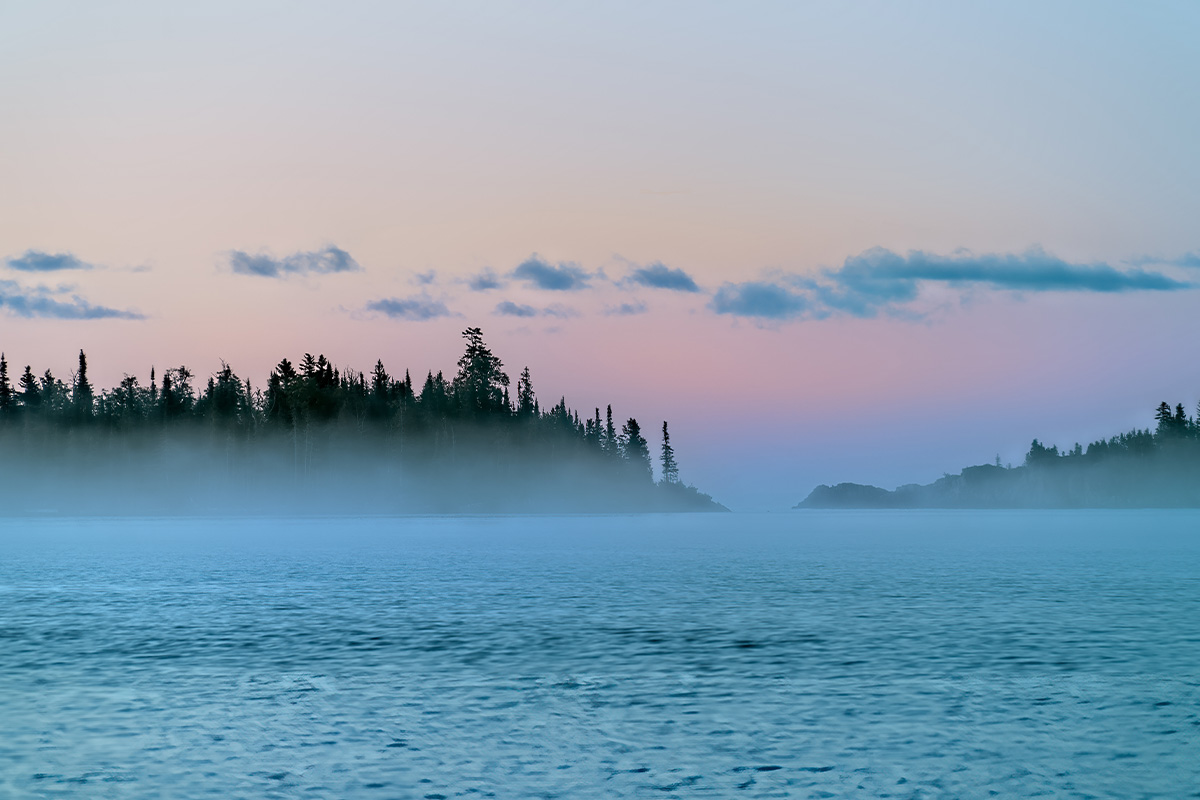
Final Thoughts
Isle Royale is more than just another national park that you should visit. To true adventurers who don’t want to get stuck behind the masses at crowded East Coast national parks, to those who enjoy packrafting trips in the largest freshwater lake in the world, and to those in search of the nation’s gem with barely a soul in sight, Isle Royale National Park will always be their Minong (the “Good Place” in Ojibwe).
If you have yet to visit Isle Royale National Park, Michigan, add it to your bucket list. You’ll be glad you did.
Featured image by: sschremp.
FAQs
How big is Isle Royale?
Isle Royale National Park is on an island measuring 50 miles long and 9 miles wide.
Why is Isle Royale National Park famous?
Isle Royale is known as one of the least crowded national parks in the US. The park is known for its 450+ islands surrounding the main island, Isle Royale, the miles upon miles of natural wilderness, rugged shorelines, and diverse wildlife.
How much does it cost to go to Isle Royale?
The cheapest way to travel to Isle Royale National Park is by ferry. A one-way trip from the mainland to the main island costs $80 (adults), with a roundtrip amounting to $160.
Are cars allowed on Isle Royale?
Cars are not permitted on Isle Royale. They are parked in the marina parking lots, which may be free or not, depending on your departure point.
Is there drinking water on Isle Royale?
Potable water is only available in the developed areas of Rock Harbor and Windigo. All surface water in other areas must be filtered or boiled before consumption.
What do you wear when visiting Isle Royale National Park?
Mandatory clothing for a trip to Isle Royale includes at least:
- Two t-shirts
- One long-sleeve shirt
- One fleece jacket or wool sweater
- One waterproof rain jacket
- Two quick-dry shorts
- Lightweight rain pants
- Three quick dry underwear
Browse KÜHL's women’s hiking clothing or men’s outdoor wear for the clothing you need for a comfortable wilderness experience at Isle Royale.
Other necessities include:
- Toiletries
- A bathing suit
- Comfortable sneakers
- Bug spray
- Sunglasses
- Sunscreen
- First aid kit (to help you stock your kit, check out our downloadable first aid checklist)


